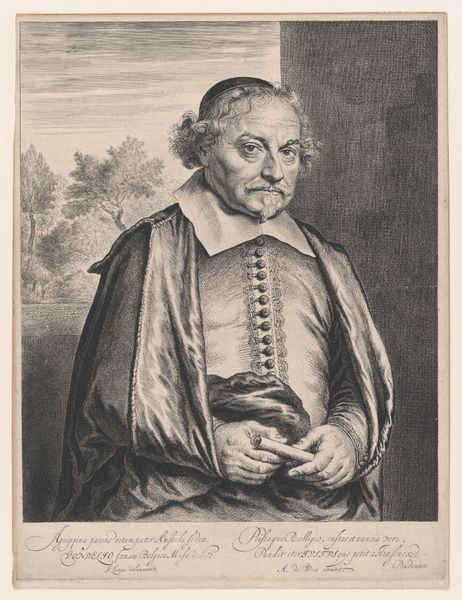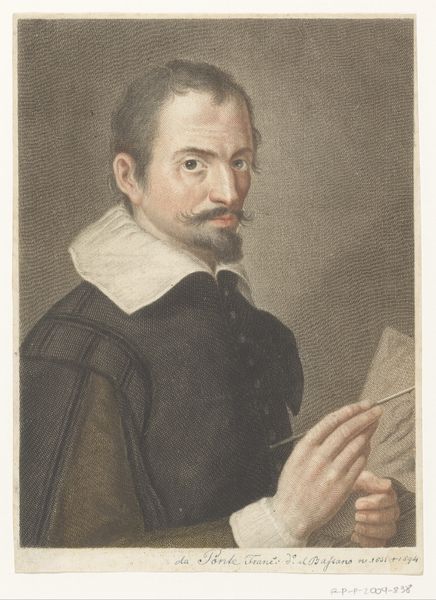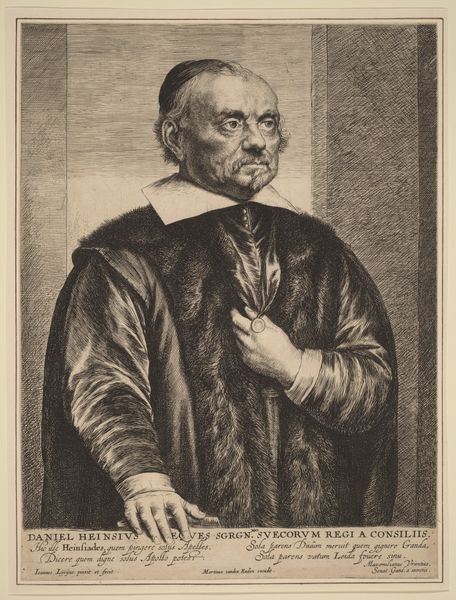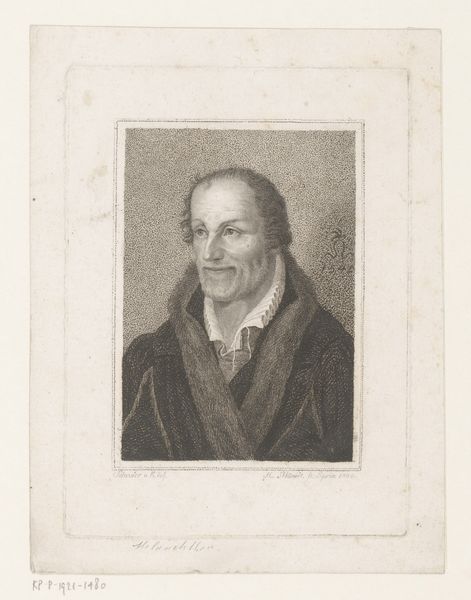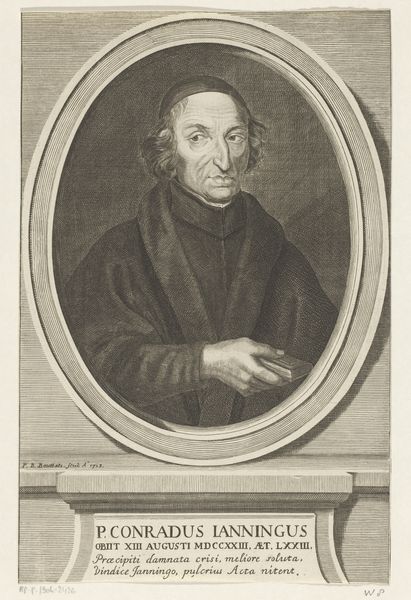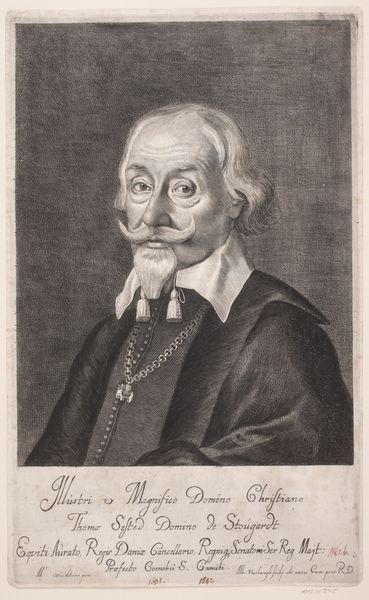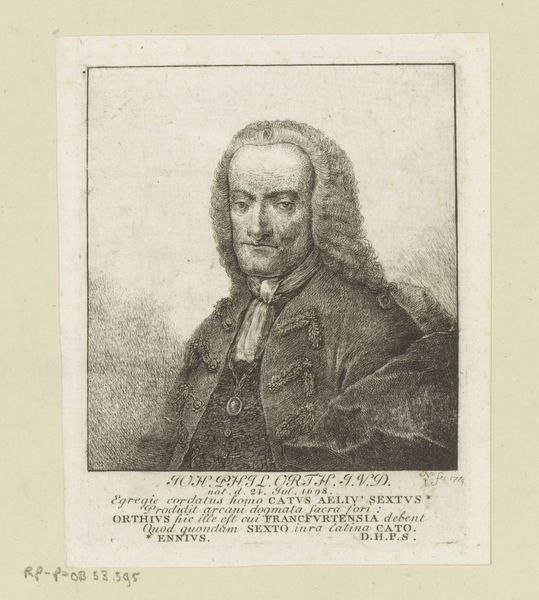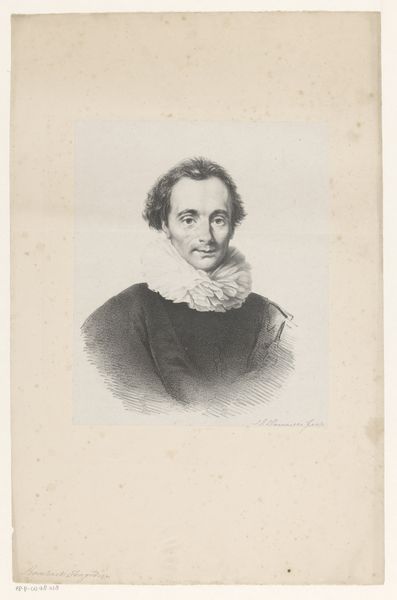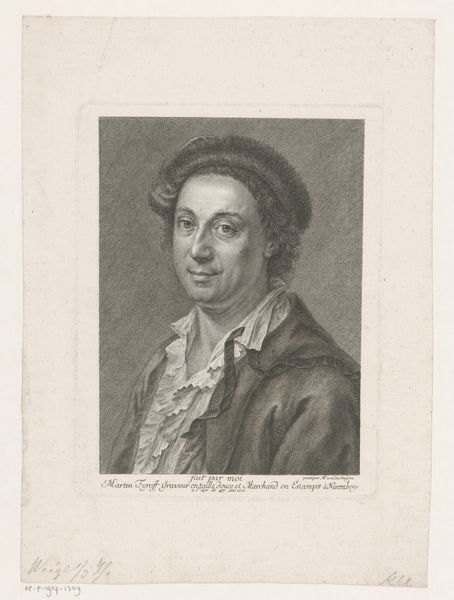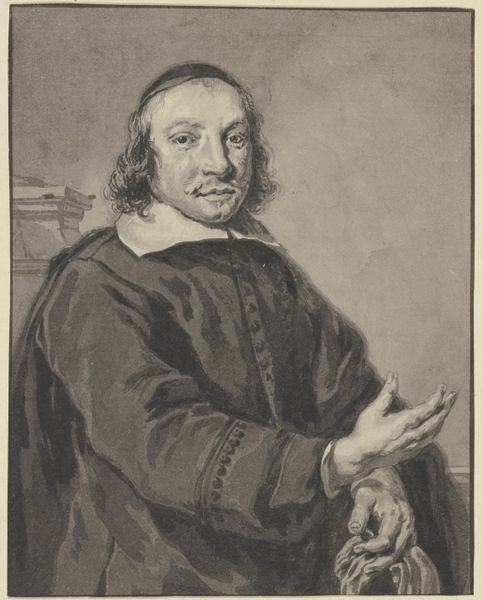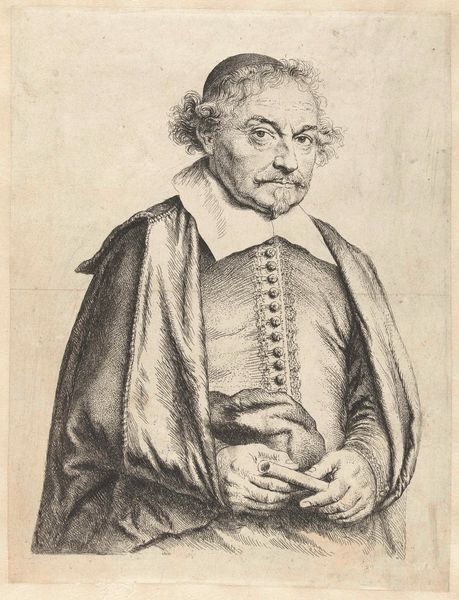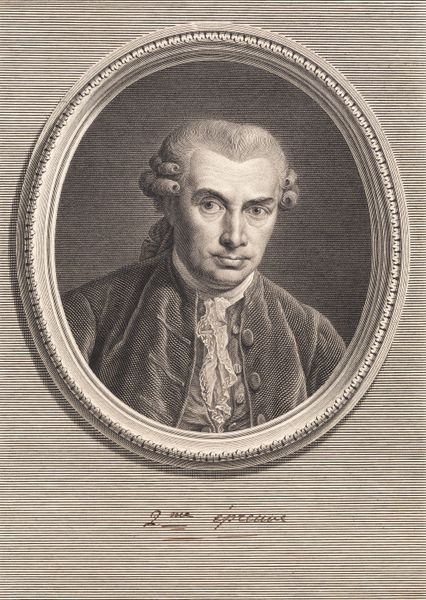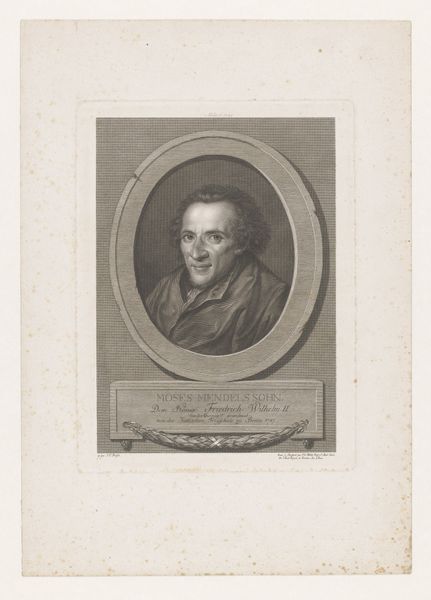
print, engraving
#
portrait
# print
#
old engraving style
#
portrait reference
#
19th century
#
history-painting
#
academic-art
#
engraving
#
realism
Dimensions: height 228 mm, width 161 mm
Copyright: Rijks Museum: Open Domain
Curator: At first glance, this print feels steeped in quiet contemplation, wouldn't you agree? There's an undeniable gravitas. Editor: Absolutely. We’re looking at a piece entitled "Portret van Philipp Melanchton," made sometime between 1800 and 1863 by Ludwig Emil Grimm. It's an engraving, quite detailed for its size. Grimm really captures a sense of academic weight, don’t you think? Curator: Undeniably. It is largely monochromatic, relying on cross-hatching and varied line weights to create tonal depth, resulting in the detailed, almost photographic representation that reinforces his era's devotion to Realism, albeit with undertones of Academic Art... Note how the texture of his fur collar practically leaps from the surface! The detail pulls you in. Editor: The collar and open book feel intentional. Melanchthon, holding what appears to be scripture—see the old engraving style lettering?—suggests this image served a larger cultural purpose. Prints like these circulated widely, reinforcing Reformation ideals, academic status, and shaping public perception. How do you read that compositional decision? Curator: Compositionally, the book serves to balance the heavy mass of the fur collar, drawing the eye downwards and then back up to Melanchthon’s face. The text acts as a patterned ground, enhancing the portrait's visual depth but ultimately anchoring it, solidifying the figure's place within a learned tradition. The slightly averted gaze… it is subtle but adds to that thoughtful persona. Editor: Yes, that gaze feels both modest and knowing, aligning perfectly with Melanchthon’s historical role. It really underscores how portraits functioned back then, more about projecting ideal character traits than capturing individual personality. What’s your take on how those details reinforce his significance? Curator: They establish a network of signifiers— fur as wealth, book as knowledge, controlled expression as wisdom—all designed to project an image of refined authority, solidifying the sitter's significance through symbolic association more than personal revelation. It is, at its core, a very calculated presentation. Editor: Precisely. Studying this engraving illuminates not just Melanchthon's image but the larger mechanics of image production and consumption in the 19th century. Thank you for highlighting that crucial element, how images played active roles in defining reputation. Curator: My pleasure; indeed, even from this distance, analyzing the art form still offers fresh ways to understand its context and how art itself conveys layers of intent.
Comments
No comments
Be the first to comment and join the conversation on the ultimate creative platform.
